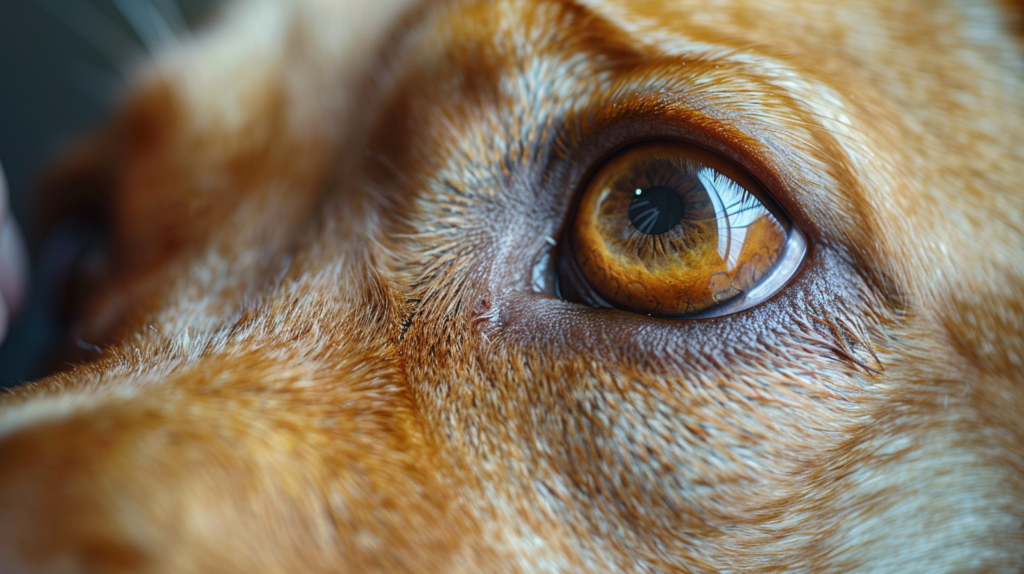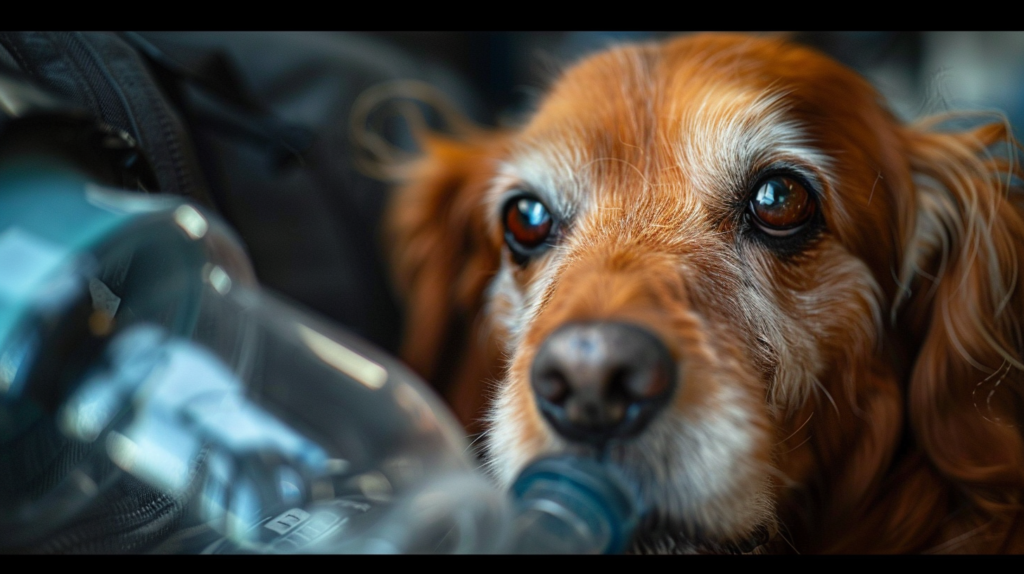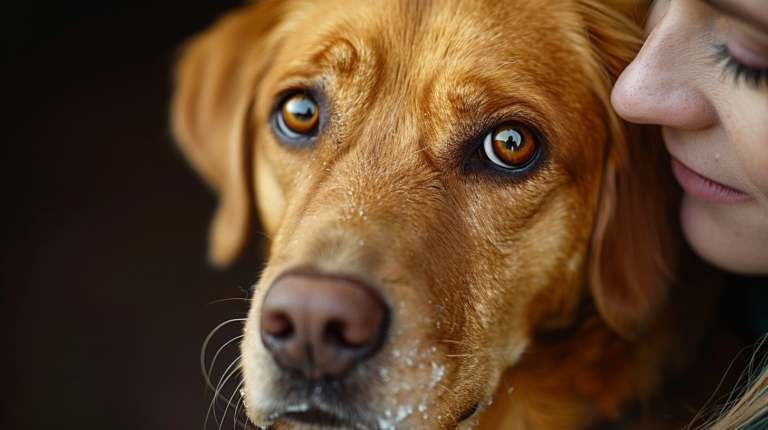Leptospirosis in dogs can be deadly if untreated. Learn the 7 critical warning signs, prevention tips, and when to seek emergency veterinary care immediately.
Table of Contents
When your beloved canine companion suddenly becomes lethargic, refuses food, or shows signs of distress, it’s natural to worry. While many dog health issues are minor and treatable, some conditions require immediate attention to prevent serious complications or even death. Leptospirosis in dogs is one such condition that every pet owner should understand, as early recognition can literally save your dog’s life.
Leptospirosis is a bacterial infection caused by spirochete bacteria of the genus Leptospira. This zoonotic disease affects both animals and humans, making it particularly concerning for pet owners. According to the American Veterinary Medical Association, leptospirosis cases in dogs have been increasing in recent years, with urban areas seeing a notable rise in infections. The disease is often called the “great mimicker” because its symptoms can resemble many other conditions, making early diagnosis challenging but crucial.
Understanding the warning signs of leptospirosis is essential for every dog owner, regardless of your pet’s age, breed, or lifestyle. This comprehensive guide will walk you through the seven critical signs you should never ignore, helping you protect your furry family member from this potentially fatal disease.
What is Leptospirosis in Dogs?

Leptospirosis is a serious bacterial infection that affects multiple organ systems in dogs. The disease is caused by various serovars (strains) of Leptospira bacteria, which are spiral-shaped microorganisms that thrive in warm, moist environments. These bacteria can survive for extended periods in water, soil, and organic matter, making transmission relatively easy in certain conditions.
The infection typically enters a dog’s system through mucous membranes, broken skin, or by ingesting contaminated water or food. Once inside the body, the bacteria multiply rapidly and spread through the bloodstream, potentially affecting the kidneys, liver, lungs, heart, eyes, and nervous system.
Key Statistics:
- Leptospirosis affects dogs of all ages, but adult dogs are more commonly diagnosed
- The disease has a mortality rate of 10-15% even with proper treatment
- Urban areas have seen a 25% increase in leptospirosis cases over the past five years
- Over 250 serovars of Leptospira exist, with at least 10 known to cause disease in dogs
Dogs can contract leptospirosis through various routes of exposure, including contact with infected wildlife urine, contaminated standing water, soil, or even through bite wounds from infected animals. The incubation period typically ranges from 2-20 days, with most dogs showing symptoms within 7-10 days of exposure.
🐕 The 7 Critical Signs of Leptospirosis in Dogs
Click any row to highlight • Early detection saves lives
| # | Warning Sign | Description | Severity | Timeframe |
|---|---|---|---|---|
| 1 |
Sudden High Fever & Lethargy
|
Temperature above 103°F (39.4°C), extreme tiredness, reluctance to move or play | Critical | 2-7 days |
| 2 |
Severe Appetite Loss & Weight Loss
|
Complete refusal to eat, rapid weight loss, dehydration signs | High | 3-10 days |
| 3 |
Jaundice (Yellowing)
|
Yellow discoloration of eyes, gums, and skin indicating liver damage | Critical | 5-14 days |
| 4 |
Urination Changes
|
Increased or decreased urination, dark/bloody urine, kidney dysfunction | High | 3-12 days |
| 5 |
Bloody Vomiting & Diarrhea
|
Persistent vomiting with blood, diarrhea containing blood or mucus | Critical | 2-8 days |
| 6 |
Breathing Difficulties
|
Labored breathing, coughing, respiratory distress, lung complications | High | 7-15 days |
| 7 |
Neurological Changes
|
Confusion, seizures, behavioral changes, coordination problems | Critical | 10-20 days |
The 7 Critical Signs of Leptospirosis You Should Never Ignore
1. Sudden Onset of High Fever and Lethargy

One of the earliest and most concerning leptospirosis symptoms in dogs is the rapid development of high fever accompanied by severe lethargy. Unlike the gradual decline in energy you might see with other illnesses, leptospirosis often strikes suddenly and dramatically.
What to Watch For:
- Body temperature exceeding 103°F (39.4°C)
- Extreme weakness and reluctance to move
- Seeking cool places or unusual sleeping positions
- Rapid, shallow breathing
- Loss of interest in favorite activities or toys
Why This Happens: The Leptospira bacteria trigger a systemic inflammatory response as the dog’s immune system attempts to fight the infection. This inflammatory cascade causes the characteristic high fever and overwhelming fatigue.
Case Example: A 4-year-old Golden Retriever named Max was playing fetch normally on a Saturday morning. By Sunday evening, his owner noticed he was burning up with fever and couldn’t be coaxed to leave his bed. Emergency veterinary testing revealed acute leptospirosis, likely contracted from a puddle during their morning walk.
2. Severe Loss of Appetite and Rapid Weight Loss

Dogs with leptospirosis often experience a complete loss of appetite (anorexia) that persists for several days. This isn’t the typical “skipping one meal” scenario – affected dogs may refuse all food and treats, leading to rapid weight loss and dehydration.
Warning Signs Include:
- Complete refusal of food for 24+ hours
- Turning away from favorite treats
- Rapid visible weight loss
- Sunken appearance around the eyes and ribs
- Decreased skin elasticity (pinch test)
The Medical Connection: As leptospirosis affects the liver and kidneys, it disrupts normal metabolism and can cause nausea. The toxins produced by the bacteria and the body’s inflammatory response also suppress appetite centers in the brain.
Important Note: Any dog that refuses food for more than 24 hours requires veterinary evaluation, especially when combined with other symptoms on this list.
3. Jaundice (Yellowing of Eyes, Gums, and Skin)

Jaundice, or icterus, is one of the most visually striking signs of leptospirosis and indicates serious liver involvement. This yellowing occurs when bilirubin builds up in the blood due to liver dysfunction or the destruction of red blood cells.
Where to Check for Jaundice:
- Whites of the eyes (sclera)
- Gums and inside of the mouth
- Inner ear flaps
- Belly skin (especially in light-colored dogs)
- Under the tongue
Progression Timeline: Jaundice typically appears 3-7 days after initial symptoms begin. The intensity can range from pale yellow to deep orange, with darker colors indicating more severe liver compromise.
Critical Information: Jaundice in dogs is always a medical emergency requiring immediate veterinary attention. The liver damage associated with leptospirosis can become irreversible if treatment is delayed.
4. Changes in Urination Patterns

Kidney involvement is common in leptospirosis cases, leading to significant changes in urination patterns. These changes can be subtle initially but often progress rapidly.
Urination Changes to Monitor:
| Early Signs | Advanced Signs |
| Increased frequency | Blood in urine (hematuria) |
| Larger volume of urine | Dark, concentrated urine |
| Accidents in house-trained dogs | Decreased urine production |
| Strong odor | Complete cessation of urination |
Why This Occurs: Leptospira bacteria have a particular affinity for kidney tissue. They damage the tiny filtering units (nephrons) and can cause acute kidney injury or failure. The kidneys lose their ability to concentrate urine and filter waste products effectively.
Monitoring Tip: Keep track of your dog’s bathroom habits, including frequency, volume, color, and any straining or discomfort during urination.
5. Vomiting and Diarrhea with Blood

Gastrointestinal symptoms in leptospirosis can be severe and often include blood, indicating serious internal inflammation and potential organ damage.
Digestive Symptoms Include:
- Projectile or persistent vomiting
- Bloody vomit (hematemesis)
- Watery diarrhea that may progress to bloody stools
- Severe abdominal pain and cramping
- Excessive drooling
- Signs of nausea (lip licking, excessive swallowing)
Dehydration Risk: The combination of vomiting and diarrhea can quickly lead to dangerous dehydration, especially in smaller dogs or puppies. Signs of dehydration include dry gums, sunken eyes, and delayed skin tent return.
Emergency Indicator: Any blood in vomit or stool warrants immediate veterinary care, as this indicates significant tissue damage and bleeding.
6. Difficulty Breathing and Respiratory Distress

While less common than other symptoms, respiratory involvement in leptospirosis can be life-threatening. The bacteria can cause inflammation in the lungs (pneumonia) or fluid accumulation, leading to breathing difficulties.
Respiratory Warning Signs:
- Rapid, shallow breathing at rest
- Open-mouth breathing when not overheated
- Coughing, especially if productive
- Blue or pale gums (cyanosis)
- Restlessness or inability to find comfortable position
- Extended neck while breathing
Medical Emergency: Respiratory distress is always a veterinary emergency. Dogs showing these signs need immediate oxygen support and intensive care.
Additional Complications: Some dogs may develop pulmonary hemorrhage syndrome, where bleeding occurs in the lungs, making breathing even more difficult and potentially fatal.
7. Neurological Signs and Behavioral Changes

In severe cases, leptospirosis can affect the nervous system, leading to concerning behavioral and neurological changes that may be subtle initially but can progress rapidly.
Neurological Symptoms Include:
- Confusion or disorientation
- Stumbling or loss of coordination
- Tremors or muscle twitching
- Seizures (in advanced cases)
- Unusual aggression or fearfulness
- Circling or repetitive behaviors
- Vision problems or apparent blindness
Why This Happens: The bacteria can cross the blood-brain barrier and cause inflammation in the brain and spinal cord (meningoencephalitis). Additionally, toxins from liver and kidney dysfunction can affect brain function.
Prognosis Concerns: Neurological involvement often indicates advanced disease and can result in permanent damage even with successful treatment of the infection.
🛡️ Risk Factors & Prevention Strategies
Click any row to highlight • Prevention is your best defense
| Risk Factor | Risk Level | Description | Prevention Strategy |
|---|---|---|---|
|
🌊
Standing Water Exposure
|
High | Puddles, ponds, streams, contaminated water sources where bacteria thrive |
• Avoid stagnant water areas
• Provide fresh drinking water
• Clean water bowls daily
|
|
🐀
Wildlife & Rodent Contact
|
High | Direct contact with infected animals or their urine in environment |
• Control rodent populations
• Secure garbage and food
• Leash dogs in high-risk areas
|
|
🌧️
Wet Weather Conditions
|
Medium | Heavy rains and flooding increase bacterial spread and contamination |
• Limit outdoor time during floods
• Rinse paws after wet walks
• Avoid flooded areas completely
|
|
🏞️
Rural/Farm Environments
|
High | Livestock areas, barns, and agricultural settings with animal waste |
• Vaccinate annually
• Supervise farm visits
• Clean paws after exposure
|
|
🏠
Indoor Environment
|
Low | Bacteria can be tracked indoors on shoes, clothing, or by rodents |
• Remove shoes at entry
• Regular home cleaning
• Control household pests
|
|
💉
Vaccination Status
|
High | Unvaccinated or overdue dogs face significantly higher infection risk |
• Annual leptospirosis vaccine
• Follow vet schedule strictly
• Update before high-risk activities
|
|
🏔️
Geographic Location
|
Medium | Warm, humid climates and areas with heavy rainfall have higher rates |
• Know local risk levels
• Extra precautions in endemic areas
• Discuss with local vet
|
Risk Factors and Prevention Strategies
Understanding the risk factors for leptospirosis helps pet owners take appropriate preventive measures and recognize when their dog might be at higher risk of exposure.
High-Risk Environments:
- Areas with standing water (ponds, puddles, marshes)
- Rural or agricultural areas
- Regions with high wildlife populations
- Urban areas with rodent problems
- Kennels or boarding facilities with poor sanitation
High-Risk Activities:
- Swimming in natural water sources
- Hiking in wooded or swampy areas
- Contact with wildlife or livestock
- Drinking from outdoor water sources
- Exposure to flood water
Prevention Strategies:
Vaccination: The leptospirosis vaccine is highly effective and typically included in combination vaccines. Annual boosters are recommended for at-risk dogs.
Environmental Management:
- Provide fresh, clean water at all times
- Avoid letting dogs drink from puddles or ponds
- Control rodent populations around your property
- Maintain good sanitation in kennels and play areas
Regular Veterinary Care: Annual wellness exams can help detect early signs of illness and ensure vaccinations are up to date.
When to Seek Emergency Veterinary Care
Leptospirosis progresses rapidly, and early intervention significantly improves outcomes. Pet owners should seek immediate veterinary care if their dog shows any combination of the following:
Immediate Emergency Signs:
- High fever (over 103°F) with lethargy
- Jaundice (yellowing of eyes or gums)
- Blood in vomit or stool
- Difficulty breathing
- Complete loss of appetite for 24+ hours
- Dramatic changes in urination
- Neurological symptoms
Time-Sensitive Treatment: The effectiveness of treatment decreases significantly after the first few days of illness. Don’t wait for symptoms to worsen – early intervention can be lifesaving.
Diagnosis and Treatment Options
Diagnostic Tests:
- Blood chemistry panels to assess organ function
- Complete blood count (CBC)
- Urinalysis
- Leptospira-specific tests (PCR, serology)
- Imaging studies if complications are suspected
Treatment Approach:
- Antibiotic therapy (typically doxycycline or penicillin)
- Supportive care including IV fluids
- Management of organ-specific complications
- Hospitalization for severe cases
- Monitoring and follow-up care
Recovery Timeline: With prompt treatment, most dogs begin showing improvement within 48-72 hours. Complete recovery may take several weeks, and some dogs may have long-term organ damage requiring ongoing management.
⚕️ Diagnosis & Treatment Timeline
Click any row to highlight • Early intervention improves outcomes
| Stage | Timeline | Diagnostic Tests | Treatment Approach | Expected Outcome | Cost Range |
|---|---|---|---|---|---|
|
🚨
Emergency Assessment
|
0-2 hours |
• Physical examination
• Vital signs monitoring
• Basic blood panel
• Urinalysis
|
• IV fluid therapy
• Pain management
• Supportive care
• Stabilization
|
Stabilization Focus | $200-500 |
|
🔬
Diagnostic Confirmation
|
2-24 hours |
• PCR testing
• Serology (antibody test)
• Complete blood count
• Liver/kidney function
|
• Antibiotic therapy start
• Continued IV fluids
• Organ support
• Monitoring protocols
|
Diagnosis Pending | $300-800 |
|
💊
Acute Treatment Phase
|
1-7 days |
• Daily blood monitoring
• Kidney function tracking
• Liver enzyme levels
• Electrolyte balance
|
• Intensive antibiotic course
• Hospitalization
• 24/7 monitoring
• Nutritional support
|
Good with early care | $800-2500 |
|
🏥
Recovery & Monitoring
|
1-3 weeks |
• Follow-up blood work
• Kidney function recheck
• Liver panel review
• Urinalysis repeat
|
• Outpatient antibiotics
• Home monitoring
• Dietary management
• Activity restriction
|
Excellent if stable | $200-600 |
|
⚠️
Complications Management
|
Variable |
• Advanced imaging
• Specialized blood tests
• Cardiac monitoring
• Neurological assessment
|
• Intensive care unit
• Dialysis if needed
• Respiratory support
• Specialist consultation
|
Guarded to poor | $2000-5000+ |
|
🔄
Long-term Follow-up
|
3-12 months |
• Quarterly blood panels
• Kidney function monitoring
• Liver health assessment
• Overall health evaluation
|
• Regular vet checkups
• Preventive vaccination
• Lifestyle modifications
• Health maintenance
|
Excellent with compliance | $150-400 |
The Human Health Connection
It’s crucial to understand that leptospirosis is a zoonotic disease, meaning it can transmit from animals to humans. If your dog is diagnosed with leptospirosis, take appropriate precautions:
Human Protection Measures:
- Wear gloves when handling your dog or cleaning up after them
- Wash hands thoroughly after any contact
- Disinfect contaminated areas with bleach solution
- Seek medical attention if you develop flu-like symptoms
- Inform your physician about your dog’s diagnosis
Family Safety: Children, elderly individuals, and immunocompromised family members are at higher risk and should have minimal contact with infected dogs until treatment is complete.
Long-term Management and Follow-up Care
Dogs that recover from leptospirosis may require ongoing monitoring and care, particularly if organ damage occurred during the acute phase of illness.
Follow-up Requirements:
- Regular blood work to monitor kidney and liver function
- Dietary modifications if organ damage is present
- Medication management for chronic conditions
- Lifestyle adjustments to prevent reinfection
Quality of Life: Most dogs that receive prompt treatment can return to normal, active lives. However, some may require special diets or medications for chronic kidney or liver conditions.
FAQ
🤔 Frequently Asked Questions
Essential answers about leptospirosis in dogs
Prevention is Key:
Vaccination and Environmental Management
The most effective way to protect your dog from leptospirosis is through a combination of vaccination and smart environmental management. The leptospirosis vaccine has dramatically reduced the incidence of this disease in areas where it's routinely used.
Vaccination Schedule:
- Initial series for puppies (typically 2-3 doses)
- Annual boosters for adult dogs
- Consider more frequent boosters for high-risk dogs
- Discuss regional strain considerations with your veterinarian
Environmental Safety Tips:
- Provide fresh water daily and clean bowls regularly
- Avoid walking dogs in areas with standing water after heavy rains
- Keep your property free of debris that attracts rodents
- Consider fencing to keep wildlife away from your dog's play areas
Call to Action
For more expert pet care tips and product recommendations, visit BlithePet.com — your trusted source for pet wellness.
Conclusion
Leptospirosis in dogs is a serious but preventable and treatable condition when caught early. The seven critical signs outlined in this guide – sudden fever and lethargy, severe appetite loss, jaundice, urination changes, bloody vomiting and diarrhea, breathing difficulties, and neurological symptoms – should never be ignored or dismissed as minor issues.
Remember that leptospirosis can progress rapidly from mild symptoms to life-threatening complications within just a few days. The key to successful treatment lies in early recognition and immediate veterinary intervention. By staying vigilant for these warning signs and maintaining preventive care including regular vaccinations, you can help protect your beloved canine companion from this potentially devastating disease.
The bond between you and your dog is precious, and being informed about serious health threats like leptospirosis is one of the most important ways you can show your love and commitment to their wellbeing. Trust your instincts – if something seems wrong with your dog, don't hesitate to seek professional veterinary care.
Have a similar experience with your pet? Share it in the comments below!






Leave a Reply